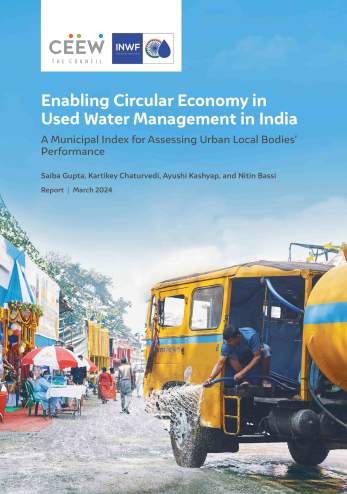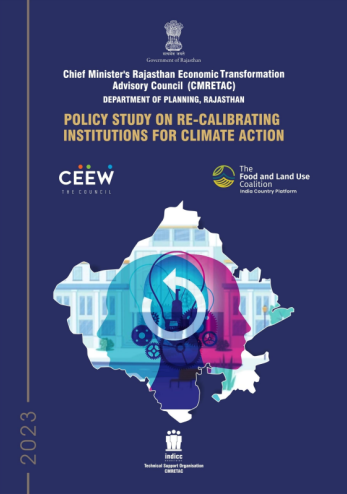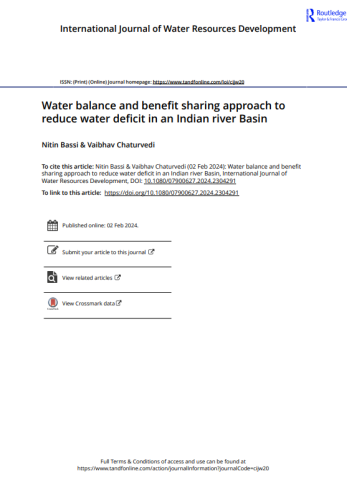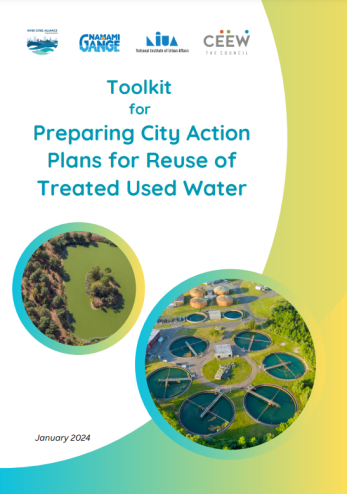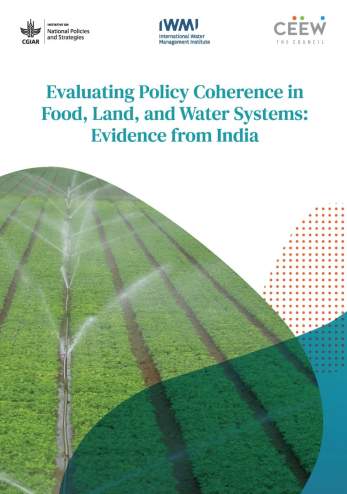Report
Institutional Reform for Improved Service Delivery in Bihar
Economic Growth, Agricultural Productivity, and a Plan for Reorganising the Minor Water Resources Department
Rudresh Sugam, Arunabha Ghosh
July 2012 | Sustainable Water
Suggested Citation: Sugam, Rudresh K., and Arunabha Ghosh. 2012. Institutional Reform for Improved Service Delivery in Bihar: Economic Growth, Agricultural Productivity, and a Plan for Reorganising the Minor Water Resources Department, Research Report submitted to the Government of Bihar. New Delhi: Council on Energy, Environment and Water and International Growth Centre, Patna.
Overview
This study was undertaken in collaboration with International Growth Centre (IGC) with the aim of advising the Minor Water Resources Department (MWRD), Bihar, on the steps needed to reorganise and strengthen the department to achieve its irrigation intensity targets during the 12th and 13th Five Year Plan periods (2012-22). It covers the assessments of the overall targets (set against past performance); analysis of human resource deficiencies; steps to improve groundwater management; and ways to improve participatory irrigation management.
Key Findings
- For agricultural productivity and cropping intensity to increase, Bihar’s irrigation intensity should increase from 85 per cent in 2012 to 209 per cent in 2022.
- There was no hiring for more than 15 years in the NWRD department of Bihar Government, resulting in only 46 per cent of the positions being occupied in 2012.
- Fewer staff meant that each person was, in effect, responsible for two or more positions. At times, the person in charge of several irrigation sites was unable to visit all the locations under his/her jurisdiction in a single month.
- No training programme was conducted for MWRD officials at any level. However, some officials received training from the water and land management institute (WALMI) while they were working in the Irrigation Department.
- More than half of the total Junior Engineers were hired on an annual contract basis and they were hired by the Irrigation Department.
- Even though many of the officials were close to retirement, they did not have adequate experience in minor irrigation as they were transferred to the MWRD in 2009-2010.
- States such as Andhra Pradesh, Madhya Pradesh, Maharashtra, Uttar Pradesh, Rajasthan, and Tamil Nadu have established irrigation divisions on the basis of basin boundaries rather than administrative boundaries.
- The primary driving force of the MWRD’s restructuring should be promoting improved service delivery to farmers and, thereby, increasing agricultural productivity and overall economic growth in Bihar.
Recommended Structure of Minor Water Source Department
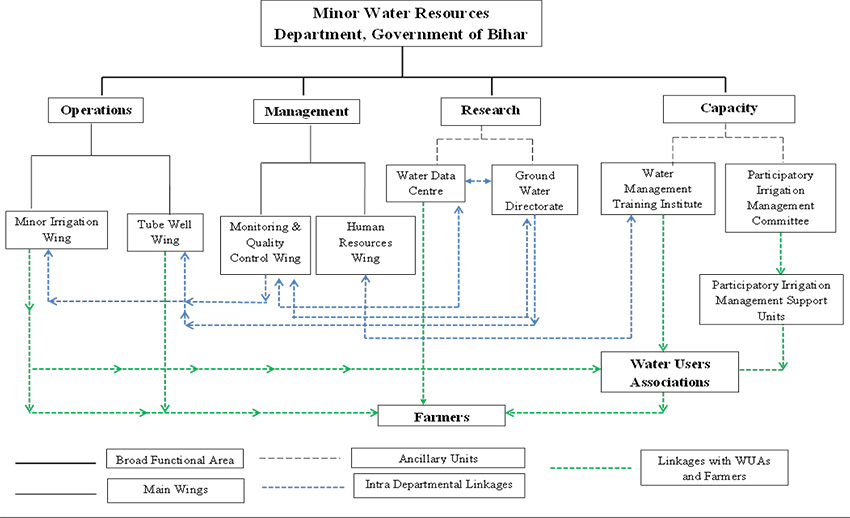
Key Recommendations
- Evaluate performance of both minor irrigation and tube well based on outcomes (irrigation achievements) rather than merely based on expenditure and investment.
- Explore ways to increase the allocation of National Rural Employment Guarantee Scheme (NREGS) funds dedicated to minor water resources, in line with other states.
- Restructure the MWRD along four lines - operations, management, research, and capacity building. MNRD also needs to restructure its staff’s orientation.
- Increase staff strength for Minor irrigation and Tube well wings. Shift the lift irrigation functional area to the tube well wing.
- Form a Human Resources Wing.
- Create a Water Management Training Institute. Give Groundwater Directorate a larger role. Focus on water quality and testing as groundwater is the major source of irrigation in Bihar.
- Develop a detailed water map for Bihar by constituting another group under the Groundwater Directorate to conduct research for discovering the water potential map in different areas of Bihar.
- Establish a dedicated Monitoring and Quality Control Wing (M&QCW).
- Create a Water Data Centre which will store, manage, and provide data for the specific purposes.
- Create a Participatory Irrigation Management Committee and WUA Support Units
The MWRD’s minor irrigation and tube well divisions do not cover all 38 districts and staffing gaps are especially severe at the field- level. There is poor quality data, limited monitoring of groundwater resources, and little attention to quality control and maintenance of projects.




